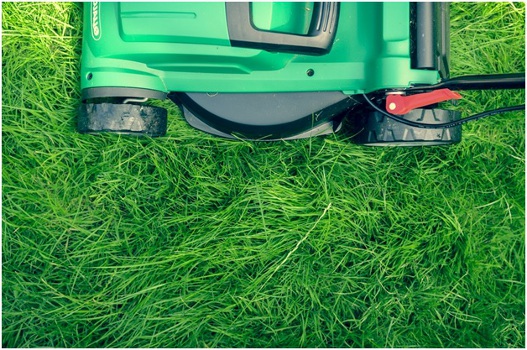In spring, nature wakes up, and your lawn returns to life. But, it can also face some problems. When the weather gets warmer and the grass grows, it can get sick differently, making it look less healthy and green.


We know that only some people are experts in lawn care, so we’ll explain everything in simple terms. We aim to ensure you know how to keep your grass looking its best during the spring season.
So, let’s dive into these common spring lawn diseases and learn how to tackle them together!
1. Dollar Spot
Dollar spot is a widespread spring and early summer lawn disease. These patches are initially light brown but can turn white or straw-colored as the disease progresses.
Identification
Dollar spots can be identified by the distinct round or oblong lesions it form on the grass blades. These lesions often have a reddish-brown border. In severe cases, the patches can merge, giving your lawn a sunburned appearance.
Management
To manage dollar spot, ensure your lawn is adequately fertilized and watered. Mowing your grass at the correct height and avoiding excessive thatch buildup can also help prevent this disease. If you notice a dollar spot, consider applying a fungicide according to the manufacturer’s instructions.
2. Brown Patch
Brown patch is another common spring lawn disease that can quickly turn your lush green lawn into a brown nightmare. It is caused by a fungus known as Rhizoctonia spp.
Identification
Brown patch typically starts as small, circular patches of brown or tan grass. These patches can range from a few inches to several feet in diameter. The edges of the affected areas may appear darker than the center, creating a “smoke ring” effect.
Management
To prevent brown patches, avoid overwatering your lawn, especially in the evening when moisture tends to linger. Ensure good air circulation by trimming overhanging branches and not mowing when the grass is wet. Fungicides can also be a preventative measure, particularly in areas with a history of brown patches.
3. Snow Mold
Snow mold is a spring lawn disease that often occurs in regions with cold winters where snow cover is common. It can appear once the snow melts and the grass beneath it is revealed. For more in-depth tips and solutions to combat snow mold and other spring lawn diseases, visit Dempsterbrothers.com, where you can find valuable resources and expert advice.
Identification
Snow mold presents itself as circular or irregularly shaped matted, straw-colored grass patches. You may also notice a fluffy, white, or pinkish fungal growth on the affected areas. It’s important to note that snow mold can affect the blades and the underlying soil.
Management
To prevent snow mold, avoid piling up large amounts of snow on your lawn during the winter. Properly aerating and fertilizing your property in the fall can also help reduce the risk of this disease. If you notice snow mold in the spring, gently rake the affected areas to promote air circulation and recovery.
Safeguarding Your Lawn Against Spring Lawn Diseases
In conclusion, spring lawn diseases can be a setback in your quest for a beautiful, healthy lawn. However, with proper identification and management, you can keep these common diseases at bay and enjoy a vibrant green lawn throughout the season.
Remember to maintain good lawn care practices. If needed, consult with a professional for expert advice on disease management.
Did you find this article helpful? If so, visit our blog. We have more valuable content for you to check out.
























